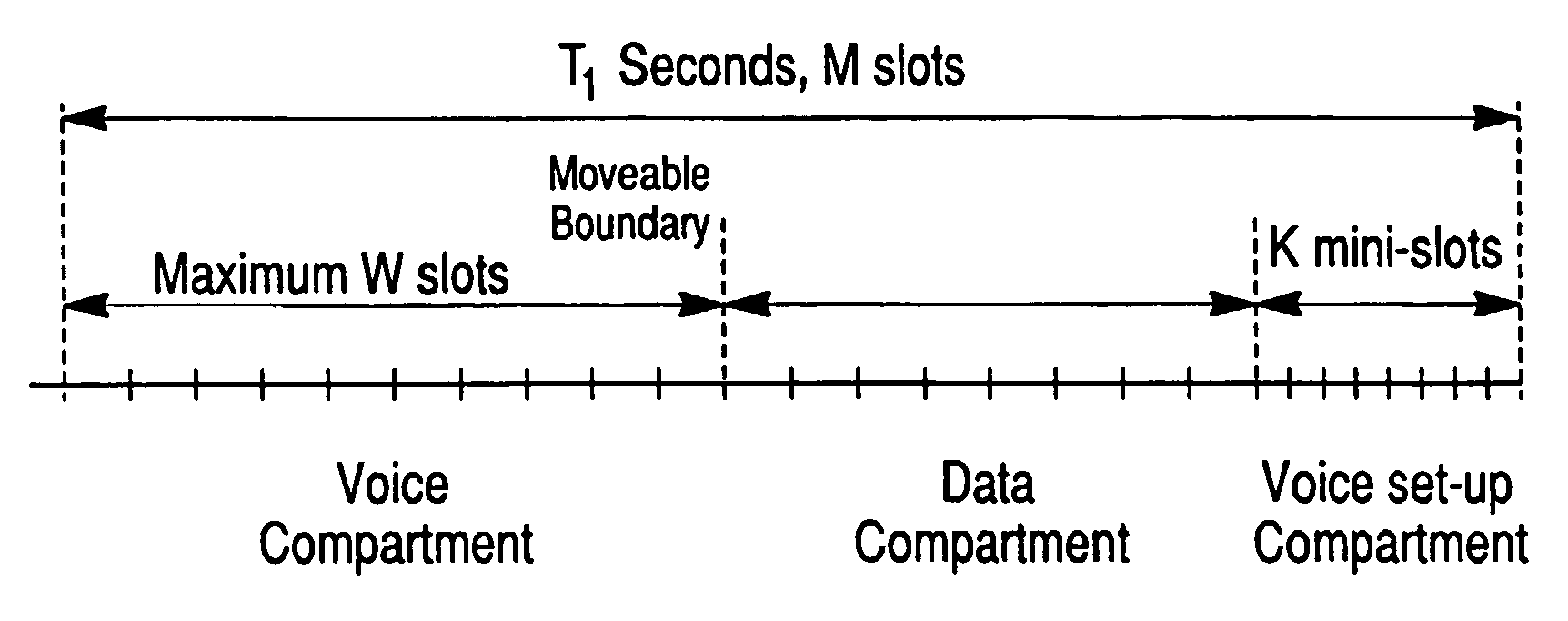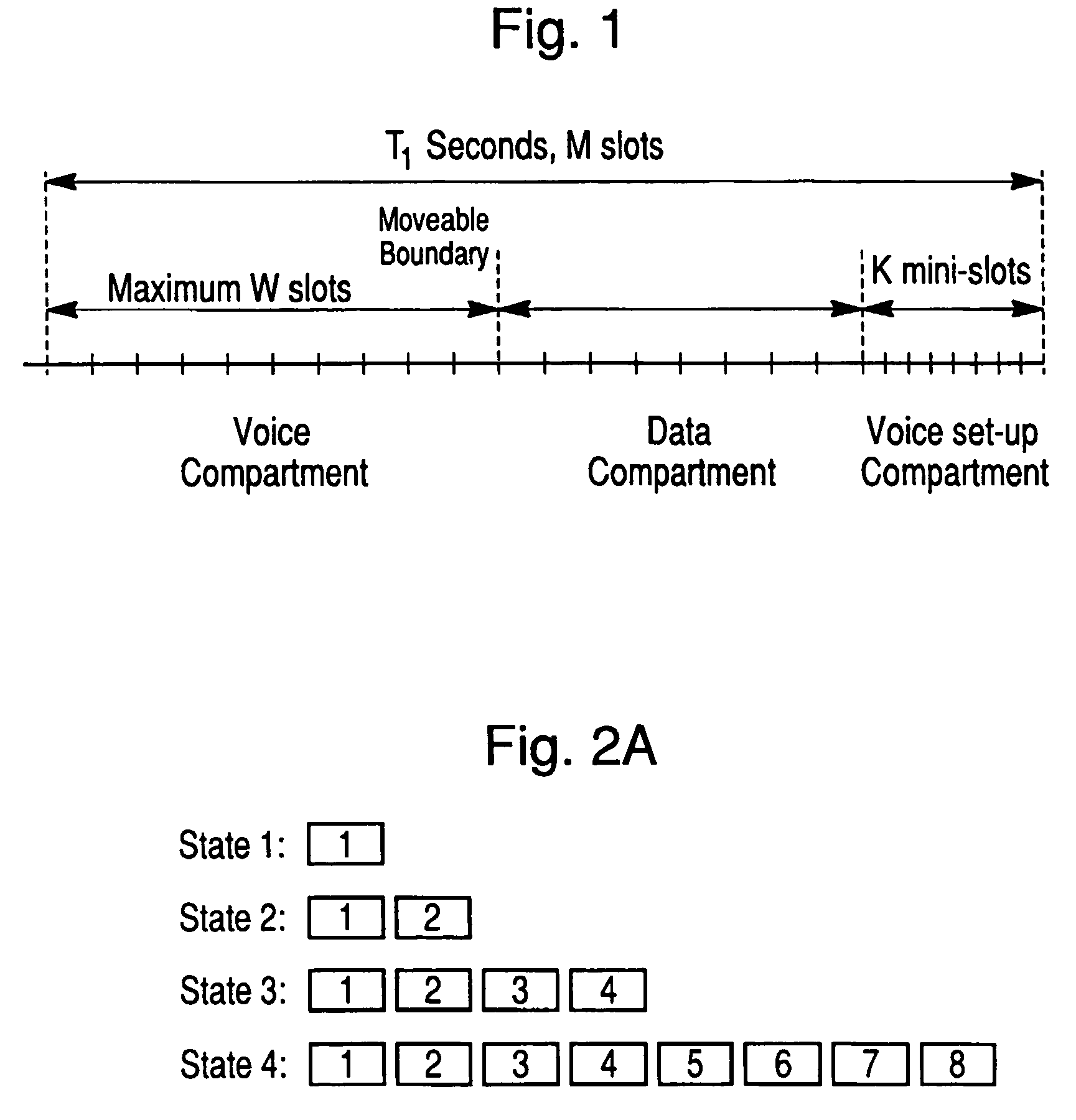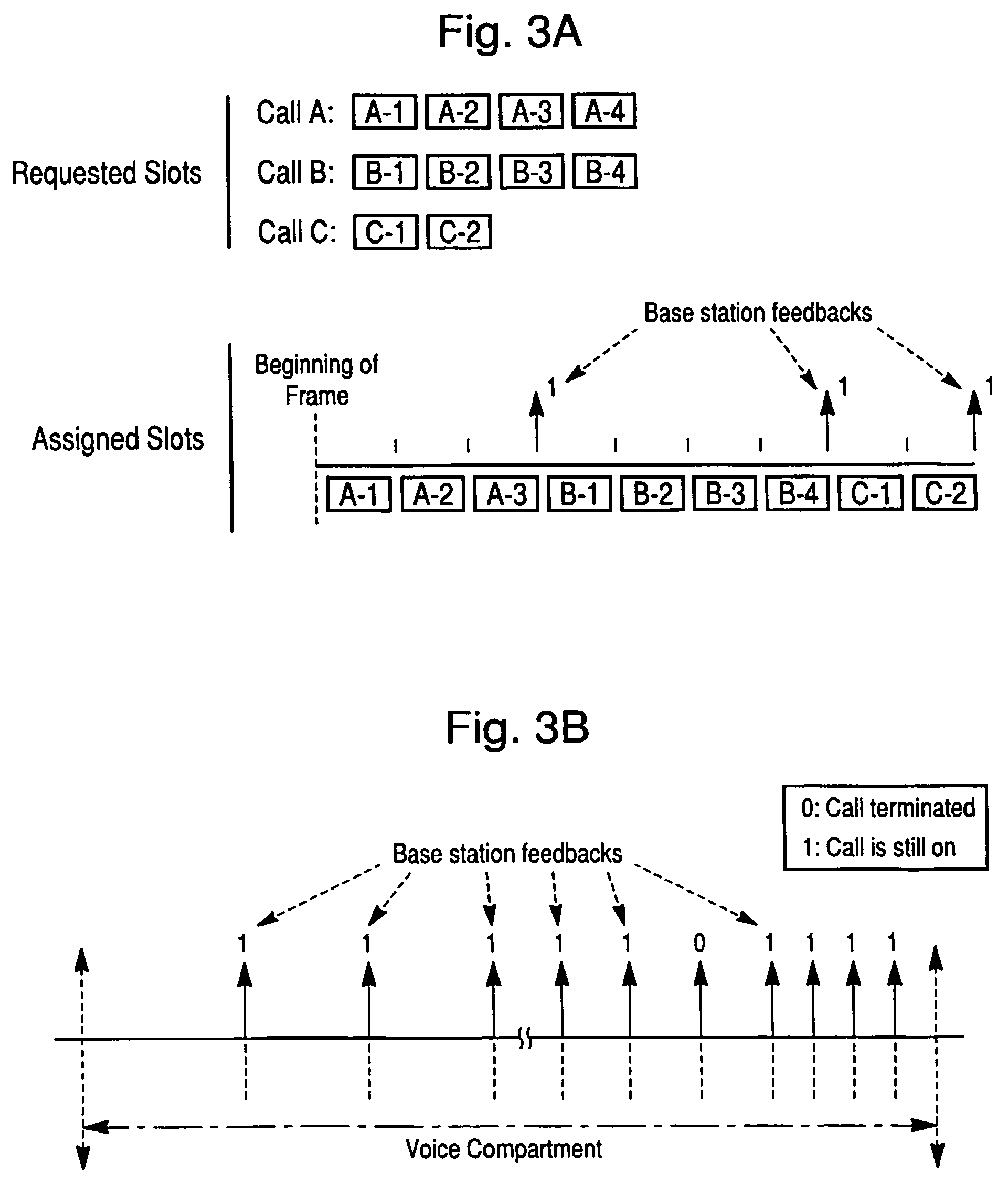SEAMA:a source encoding assisted multiple access protocol for wireless communication
a wireless communication and source encoding technology, applied in multiplex communication, data switching networks, wireless commuication services, etc., can solve problems such as shameful degradation of quality, and achieve the effects of reducing the number of links, and maximizing the utilization of available bandwidth
- Summary
- Abstract
- Description
- Claims
- Application Information
AI Technical Summary
Benefits of technology
Problems solved by technology
Method used
Image
Examples
example 1
Proof of the Ability of Admission Policy-A and Admission Policy-B to Satisfy the Requirements of the SEAMA Protocol of the Present Invention
[0241]To prove the ability of Admission Policy-A and Admission Policy-B to satisfy the requirements of the SEAMA protocol of the present invention, the distortion-rate performance ƒl(xl) is assumed to be a convex and decreasing function of xl (the rate applied to calls in state l) for l=1, . . . , L. By definition:
[0242]S(n1,n2,…,nL)=Δ{x1,x2,…,xL;∑l=1Lnlxl≤W,xl≤xlmax,l=1,…L}
[0243]Additionally, D(n1, n2, . . . , nL) and g(n1,n2, . . . , nL) are defined as follows:
[0244]D(n1,n2,…,nL)=1ng(n1,n2,…,nL)=Δmin(x1,…,xL)∈S1n∑l=1Lnlfl(xl),
[0245]where nl+ . . . +nL=n. The rates (x1* , X2*, . . . , xL*) minimizing the above minimization problem are termed the optimal rate assignment corresponding to (n1,n2, . . . , nL).[0246]Lemma 1: For any positive integers (n1,n2, . . . ,nL):
g(n1,n2, . . . ,nL)≦g(n1+1,n2, . . . ,nL)
Proof: Assume tha...
example 2
Proof That The Optimal Distortion of Each Call Regardless Of Its State Is Equal To The Average Distortion Obtained In Equation (21)
[0258]High rate approximation: the distortion-rate performances of the speech encoder in state l is assumed to be represented by the function ƒl(x)=αl2−2kx, x≦xlmax, l=1, . . . , L.[0259]Lemma 4: If the high rate approximation holds for the distortion-rate performances of the encoder and if
[0260]∑l=1Lnlxlmax>W,
then
[0261]D(n1,…,nL)=(∐l=1Lαlnln)2-kWn,
where D(n1,n2, . . . , nL) is defined as in Example 1.
Proof: By applying the Lagrange Multipliers method for the minimization problem in Equation (4),
[0262]nl∂fl(xl)∂xl+λnl=0,l=1,…,L;therefore,xl*=Wn-12klog(∏i=1Lαininαl),fl(xl*)=αl2-2kxl*=(∏l=1Lαinln)2-2kWn,D(n1,…nL)=(∏l=1Lαlnln)2-2kWn.•[0263]Lemma 5: assume that the distortion for all states without controlling the rates are equal (i.e., δ=αl2−2kxlmax= . . . =αL2−2kxLmax). Then
[0264]D(n1,…,nL)=δ22k1n{∑l=1Lnlxlma...
example 3
Closed Forms for E[DN|N=n] and E[RN|N=n] When the Network Load ρv is Large
[0274]This example provides closed forms for E[DN|=n] and E[RN|N=n] when the network load ρν is large.
[0275]Dn=δ22k{Zn-Wn}+,whereZn∼𝒩(μx,σx2n).
Therefore,
[0276]E[DN|N=n]=∫-∞+∞δ22k{z-Wn}+12πnσXⅇ-12(z-μX)2σX2lnⅆz=∫-∞Wnδ12πnσXⅇ-12(z-μX)2σX2lnⅆz+∫Wn+∞δ22k{z-Wn}+12πnσXⅇ-12(z-μX)2σX2lnⅆz
The first term in the sum is equal to:
[0277]δP[Zn<Wn]=δ[1-Q(W-nμxnσX)]=δ[1-Q(un)]
The second term is equal to:
[0278]δ22kσXn(σXnkln2-un)Q(un-2σXnkln2)Thus:E[DN|N=n]=δ[1-Q(un)]+δ22kσXn(σXnkln2-un)Q(un-2σXnkln2)Inaddition,E[RN|N=n]=∫-∞+∞min{z,Wn}12πσXnⅇ-12(z-μX)2σX2 / nⅆz.=∫-∞Wnz12πσXnⅇ-12(z-μX)2σX2 / nⅆz+∫-∞+∞Wn12πσXnⅇ-12(z-μX)2σX2 / nⅆz=μX-σX2πnⅇ-12(W-nμX)2σXn+(W-nμXn)Q(W-nμXσXn).•
[0279]Accordingly, with the high-rate approximation, the optimal distortion of each call regardless of its state is ...
PUM
 Login to View More
Login to View More Abstract
Description
Claims
Application Information
 Login to View More
Login to View More - R&D
- Intellectual Property
- Life Sciences
- Materials
- Tech Scout
- Unparalleled Data Quality
- Higher Quality Content
- 60% Fewer Hallucinations
Browse by: Latest US Patents, China's latest patents, Technical Efficacy Thesaurus, Application Domain, Technology Topic, Popular Technical Reports.
© 2025 PatSnap. All rights reserved.Legal|Privacy policy|Modern Slavery Act Transparency Statement|Sitemap|About US| Contact US: help@patsnap.com



